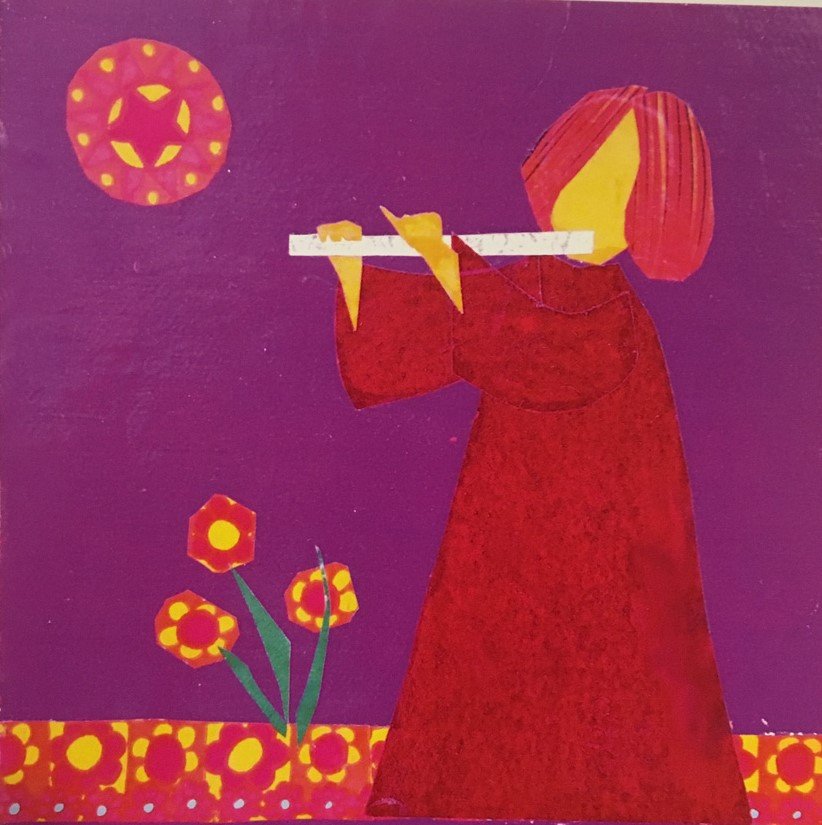Music
Used with permission, the artwork featured on this page is by Judith Clingan AM.

“All kinds of musical media can be used to awaken and harmonise the child’s soul powers. The sense for what is beautiful and also for what is not beautiful is cultivated. Simple exercises for training the ear are practised, and the child introduced to simple rhythmical melody. By playing them and by listening, the child learns pieces of music that suit their age.”
~Rudolf Steiner
Musical Ensembles
Singing, recorder and musicianship (notation and aural work). Through singing and recorder playing in ensembles, students will develop an understanding of the elements of music, from basic to increasingly complex concepts. A student’s exploration includes pitch differences, keys, time signatures, beat and rhythm, Sol fa, reading, writing and playing music notation, and learning to harmonise with others.
Music in Steiner Education
Music is hugely important in Steiner/Waldorf education. All children, not only the apparently gifted, deserve to be led into the wonderful world of music-making. Music uses every facet of our being: our ears, our eyes, our voices, our hearts, our souls, our minds, our gross motor faculties and our fine motor faculties, and our sense of community.
We need to foster in the growing child delight in what is truly musical and beautiful, in which the creator has revealed her/his inner being. The child’s deepest inner being yearns to meet this – depth of soul meeting depth of soul.
“All children deserve to be led into the wonderful world of music.”
A Child’s Musical Journey
Steiner recommends the very young child sings and hears mainly pentatonic music, reflecting the earliest music-making of our forebears. Wind instruments are met first – our breath, our very “spirit” (spiritus = breath) activates the sound. Thus, the simple bamboo pentatonic recorder can be a young child’s first instrument. From class 3 onwards, the diatonic (all notes) recorders are played, and the reading and writing of music notation begins.
“Music uses every facet of our being: our ears, our eyes, our voices, our hearts, our souls, our minds, our gross motor faculties and our fine motor faculties, and our sense of community.”
The Relevance of Recorders
Recorders are often considered merely toys – but the recorder, though less technically complex than orchestral instruments, can create great beauty. Its simplicity leads to it being less expensive and therefore accessible to all. And in a shorter time span than is possible with most other instruments, as we learn to play recorders well, we meet the concepts essential to our grasp of the world of music: pitch differences, keys, time signatures, beat and rhythm. Learning the recorder can lead painlessly to learning other instruments, as well as enhancing the child’s development in mathematics, language, spatial awareness, history and geography…in fact, everything!
“…as we learn to play recorders well, we meet the concepts essential to our grasp of the world of music: pitch differences, keys, time signatures, beat and rhythm.”
The Experience of Singing
Singing remains paramount, right through from early childhood to adulthood. We all have a voice – and, if we can shed the embarrassment fostered by our modern culture, all of us can, and should, sing every day. It has been proven in recent years that humans thrive on group singing – the more frequently we sing together, the more harmonious our lives will be in every sense. And as the child who sings daily becomes a confident singer, rounds and part songs can be enjoyed, leading eventually to the heights of sublime musical creations from around the world and from across the centuries.
Read more about Steiner Education.
Meet Our Music Tutor
-
I have been a professional musician and music educator all my life.
I studied voice, composition, bassoon, recorder and early music at the Canberra School of Music and Sydney University, and music education at the Kodály Institute in Hungary. I have also studied at Emerson College in England.
I have taught music to all ages and levels, from pre-school to university, and have founded and directed the Canberra Children’s Choir, the Young Music Society, Gaudeamus, Imagine Music Theatre, Voicebox Youth Opera, Canberra Recorder and Early Music Society, the Variables, Lady’s Mantle and Waldorf Wayfarers. I co-founded and initially directed A Chorus of Women. I conducted the Canberra Choral Society and directed many operas and music theatre performances, many my own compositions.
I have been involved in anthroposophy and Steiner education since 1991, when I began to teach music part-time at Orana. Since then, I have directed music at Mt Barker Waldorf School, and at Orana, where I developed a music curriculum for Steiner schools which has been used across Australia and internationally. Additionally, I have been the music tutor for Steiner teacher training organisations around Australia, New Zealand and world-wide.
I have taken my performing group Wayfarers to perform and to teach students, parents and teachers at Steiner schools in Taiwan, China, Japan, Korea, India, Switzerland, Germany, Finland, Iceland and UK.
My published works ‘Songs of the Tree of Life’, and ‘Play On!’ are used widely in Steiner schools around the world; 'Play On!' has been translated into Mandarin and is soon to be published in German.
Now in my 70’s, I direct the Canberra Wayfarers as well as work on new music theatre works, and am preparing more books for publication. In my spare time I love to paint and read and enjoy the bush.




